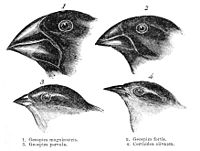
Photo from wikipedia
In this contribution, the aspects of reptile and amphibian speciation that emerged from research performed over the past decade are reviewed. First, this study assesses how patterns and processes of… Click to show full abstract
In this contribution, the aspects of reptile and amphibian speciation that emerged from research performed over the past decade are reviewed. First, this study assesses how patterns and processes of speciation depend on knowing the taxonomy of the group in question, and discuss how integrative taxonomy has contributed to speciation research in these groups. This study then reviews the research on different aspects of speciation in reptiles and amphibians, including biogeography and climatic niches, ecological speciation, the relationship between speciation rates and phenotypic traits, and genetics and genomics. Further, several case studies of speciation in reptiles and amphibians that exemplify many of these themes are discussed. These include studies of integrative taxonomy and biogeography in South American lizards, ecological speciation in European salamanders, speciation and phenotypic evolution in frogs and lizards. The final case study combines genomics and biogeography in tortoises. The field of amphibian and reptile speciation research has steadily moved forward from the assessment of geographic and ecological aspects, to incorporating other dimensions of speciation, such as genetic mechanisms and evolutionary forces. A higher degree of integration among all these dimensions emerges as a goal for future research.
Journal Title: Genes
Year Published: 2019
Link to full text (if available)
Share on Social Media: Sign Up to like & get
recommendations!